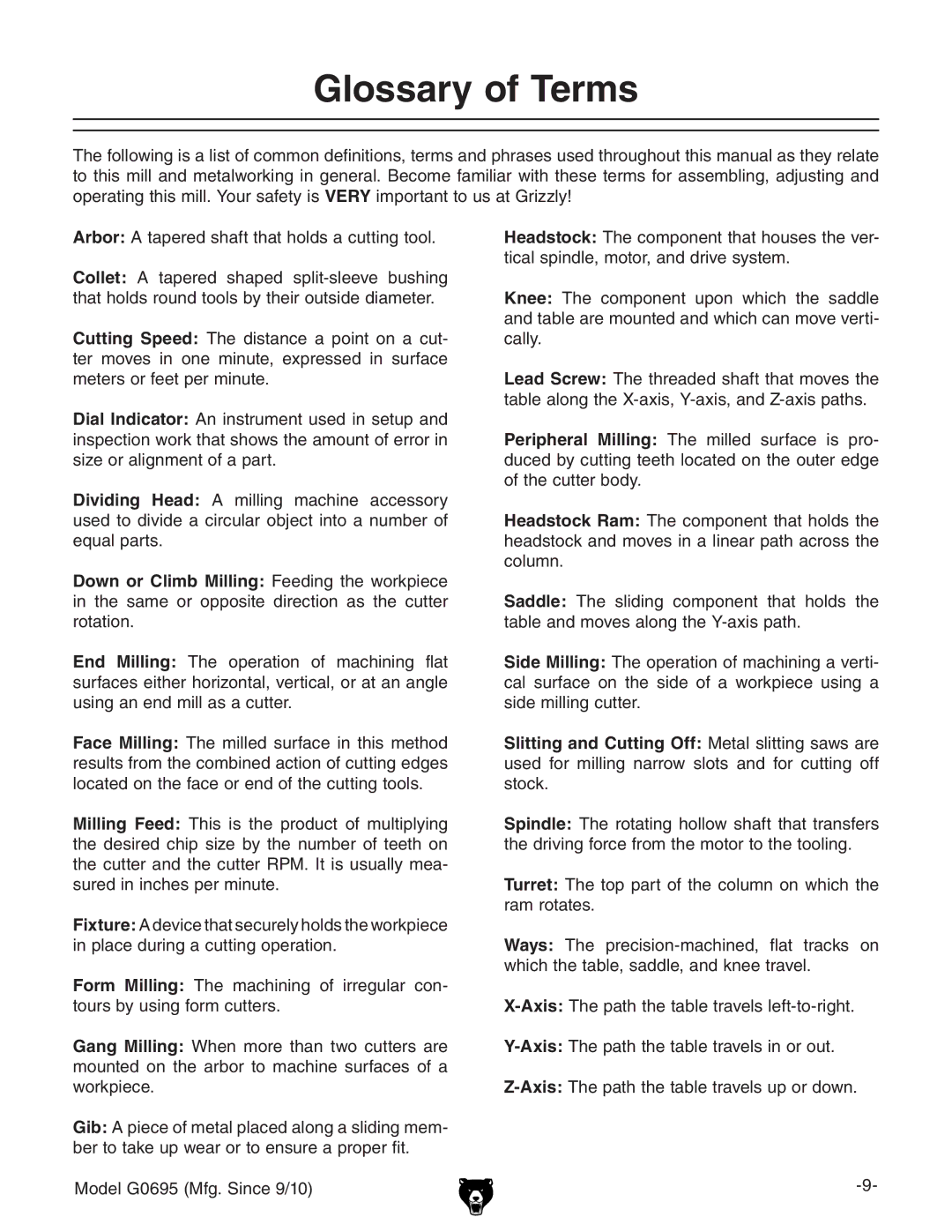
Glossary of Terms
The following is a list of common definitions, terms and phrases used throughout this manual as they relate to this mill and metalworking in general. Become familiar with these terms for assembling, adjusting and operating this mill. Your safety is VERY important to us at Grizzly!
Arbor: A tapered shaft that holds a cutting tool.
Collet: A tapered shaped
Cutting Speed: The distance a point on a cut- ter moves in one minute, expressed in surface meters or feet per minute.
Dial Indicator: An instrument used in setup and inspection work that shows the amount of error in size or alignment of a part.
Dividing Head: A milling machine accessory used to divide a circular object into a number of equal parts.
Down or Climb Milling: Feeding the workpiece in the same or opposite direction as the cutter rotation.
End Milling: The operation of machining flat surfaces either horizontal, vertical, or at an angle using an end mill as a cutter.
Face Milling: The milled surface in this method results from the combined action of cutting edges located on the face or end of the cutting tools.
Milling Feed: This is the product of multiplying the desired chip size by the number of teeth on the cutter and the cutter RPM. It is usually mea- sured in inches per minute.
Fixture: A device that securely holds the workpiece in place during a cutting operation.
Form Milling: The machining of irregular con- tours by using form cutters.
Gang Milling: When more than two cutters are mounted on the arbor to machine surfaces of a workpiece.
Gib: A piece of metal placed along a sliding mem- ber to take up wear or to ensure a proper fit.
Model G0695 (Mfg. Since 9/10)
Headstock: The component that houses the ver- tical spindle, motor, and drive system.
Knee: The component upon which the saddle and table are mounted and which can move verti- cally.
Lead Screw: The threaded shaft that moves the table along the
Peripheral Milling: The milled surface is pro- duced by cutting teeth located on the outer edge of the cutter body.
Headstock Ram: The component that holds the headstock and moves in a linear path across the column.
Saddle: The sliding component that holds the table and moves along the
Side Milling: The operation of machining a verti- cal surface on the side of a workpiece using a side milling cutter.
Slitting and Cutting Off: Metal slitting saws are used for milling narrow slots and for cutting off stock.
Spindle: The rotating hollow shaft that transfers the driving force from the motor to the tooling.
Turret: The top part of the column on which the ram rotates.
Ways: The
